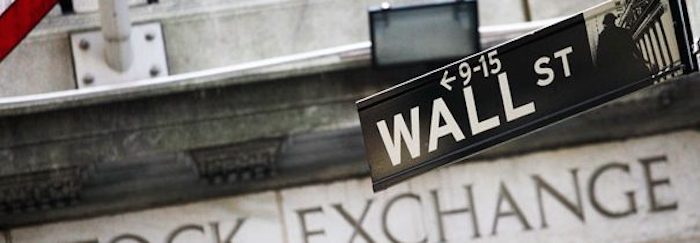Asset Management and Human Resource Management are crucial components of a successful business. In this article, we will explore the significance of these two disciplines and how they intersect to drive cost-effective investment decisions and organizational growth. From understanding the fundamentals to implementing strategic initiatives, we will delve into the role of human resource management in fostering a thriving workforce. Additionally, we will discuss the importance of asset management, encompassing various valuable resources, including cash, bonds, stocks, property, and most importantly, people.
Defining Asset Management
Asset management is a business process rooted in effective decision-making. It encompasses a comprehensive approach to evaluating and optimizing various assets to drive profitable investments. Beyond financial resources, asset management also recognizes the value of human capital. Therefore, to ensure optimal asset management, an organization must prioritize human resource management.
The Role of Human Resource Management
The Human Resources Department’s Strategic Partner Role
Within an organization, the human resources department serves as a strategic partner. Recognizing their critical function, this department plays an instrumental role in the success of a company. They contribute to the formulation of long-term organizational plans and actively participate in strategic decision-making processes. By aligning human resource strategies with overarching business goals, they can effectively address the evolving needs of the organization.
Human Resource Management as a Catalyst for Change
Human resource management acts as a catalyst for change by nurturing the growth and development of employees. By fostering a culture of continuous improvement, human resource professionals empower individuals to enhance their skills and contribute to the organization’s overall success. They identify areas where employees can improve and develop customized training programs to bridge any gaps. Moreover, evaluating the effectiveness of these initiatives ensures continuous improvement in future endeavors.
Key Elements of Effective Human Asset Management
Active Involvement in Organizational Planning
To facilitate true human asset management, the human resources department must actively participate in organizational planning. By having the authority to determine resource requirements during the planning phase, they can ensure that the organization has the necessary personnel and expertise to achieve its objectives effectively.
Recruitment and Selection of Ideal Candidates
Human asset management thrives when the human resources department has the autonomy to recruit the best-suited candidates for the organization. Employing comprehensive selection processes, including testing and assessments, enables them to identify individuals who possess the required skills, knowledge, and cultural fit. This meticulous approach promotes the alignment of human assets with the organization’s strategic objectives.
Traditional Personnel Administration
Apart from strategic initiatives, the human resources department should also excel in traditional personnel administration tasks. These include administering wages and benefits, managing employee time effectively, controlling employee costs, and conducting performance reviews and appraisals. These fundamental practices ensure that employees are compensated fairly, provided with necessary resources, and evaluated based on their performance.
The Significance of Human Asset Management
Impact on Organizational Success
Human asset management directly influences the success of an organization. Hiring unqualified personnel can lead to various problems and hinder productivity. Additionally, high turnover rates result in wasted resources, including time, training, and financial investments. By prioritizing effective human resource management, companies can mitigate these risks, fostering a motivated workforce that contributes to long-term success.
Employee Engagement and Retention
To retain a talented workforce, organizations must develop programs that enhance employee skills and job satisfaction. By creating a positive work environment and investing in professional development opportunities, companies can inspire loyalty and reduce the likelihood of employees being enticed by competitors’ offers. This commitment to employee engagement ultimately contributes to higher productivity and overall organizational performance.
Heading 5: The Integration of Asset Management and Human Resource Management
Asset management extends beyond financial resources and encompasses the effective management of people. Integrating asset management and human resource management aligns the organization’s investment decisions with its human capital strategy. By recognizing that human resources are a valuable asset, businesses can optimize their investments and achieve sustainable growth.
FAQs:
Q1: What is asset management?
A1: Asset management is a business process focused on making cost-effective investment decisions. It involves evaluating and optimizing various resources, including financial assets like cash, bonds, and stocks, as well as non-financial assets such as property and human capital.
Q2: What is human resource management?
A2: Human resource management is a department within an organization that is responsible for managing and developing the workforce. It involves activities such as recruitment, training, performance evaluation, and personnel administration to ensure the organization has the right people with the right skills in the right positions.
Q3: How does human resource management contribute to asset management?
A3: Human resource management plays a vital role in asset management by ensuring that the organization has qualified and capable individuals to make sound investment decisions. By hiring the right people and providing them with training and development opportunities, human resource management enhances the effectiveness and productivity of the workforce, thereby contributing to overall asset management success.
Q4: What is the role of the human resources department in organizational planning?
A4: The human resources department plays an active role in organizational planning by aligning human resource strategies with the overall business goals. They provide input on resource requirements, workforce capabilities, and talent acquisition strategies to support the organization’s long-term plans. This involvement ensures that the organization has the necessary human assets to execute its strategic initiatives.
Q5: How does human resource management facilitate employee development?
A5: Human resource management facilitates employee development by identifying areas for improvement and designing training programs to enhance skills and knowledge. They also oversee performance reviews and appraisals to provide feedback and guidance for individual growth. By nurturing employee development, human resource management fosters a skilled and engaged workforce that contributes to the organization’s success.
Q6: Why is human asset management important for business success?
A6: Human asset management is crucial for business success because the quality and capabilities of the workforce directly impact an organization’s performance. By effectively managing human assets, businesses can optimize productivity, reduce turnover, and enhance employee engagement and satisfaction. This, in turn, leads to improved financial performance and a competitive advantage in the market.
Q7: How can effective human asset management mitigate risks and wastage?
A7: Effective human asset management reduces risks and wastage by ensuring that the organization hires qualified individuals who are a good fit for the roles they are assigned. By investing in proper recruitment, training, and development, businesses can minimize turnover, avoid costly hiring mistakes, and optimize the utilization of resources such as time, money, and training investments.
Q8: How does integrating asset management and human resource management benefit an organization?
A8: Integrating asset management and human resource management aligns investment decisions with the organization’s human capital strategy. This synergy ensures that financial investments are made in areas that maximize the potential of the workforce. By recognizing human resources as a valuable asset and integrating them into asset management strategies, organizations can achieve sustainable growth and maximize returns on their investments.
Q9: What is the relationship between asset management and human resource management?
A9: Asset management and human resource management are interconnected disciplines. Human resource management plays a pivotal role in driving effective asset management by ensuring that the right people, with the necessary qualifications, are recruited and developed to make cost-effective investment decisions.
Q10: How does human resource management contribute to organizational success?
A10: Human resource management acts as a strategic partner, actively participating in organizational planning and decision-making processes. It also fosters a culture of continuous improvement by identifying areas for employee development and implementing training programs. Ultimately, effective human resource management cultivates a motivated workforce, leading to increased productivity and organizational success.
Q11: Why is human asset management essential for businesses?
A11: Human asset management is crucial as the success of a company heavily depends on its workforce. By hiring qualified individuals and investing in their growth, businesses can optimize their human capital, reduce turnover, and ensure efficient utilization of resources. Effective human asset management enhances employee engagement, leading to improved performance and long-term business prosperity.
Q12: How does asset management extend beyond financial resources?
A12: Asset management encompasses various valuable resources, including cash, bonds, stocks, property, and people. Recognizing that human capital is a critical asset, organizations must integrate human resource management practices within their asset management strategies to achieve sustainable growth.




